In the end, I understood: the crypto world is not a casino but a battlefield. I borrowed 200,000 capital from friends everywhere, continuously summarized failed cases, learned various trading techniques, strategies, and chart analysis, and developed a trading method with a success rate of 90%. It took me 90 days to roll my capital to over 20 million; it wasn't easy!
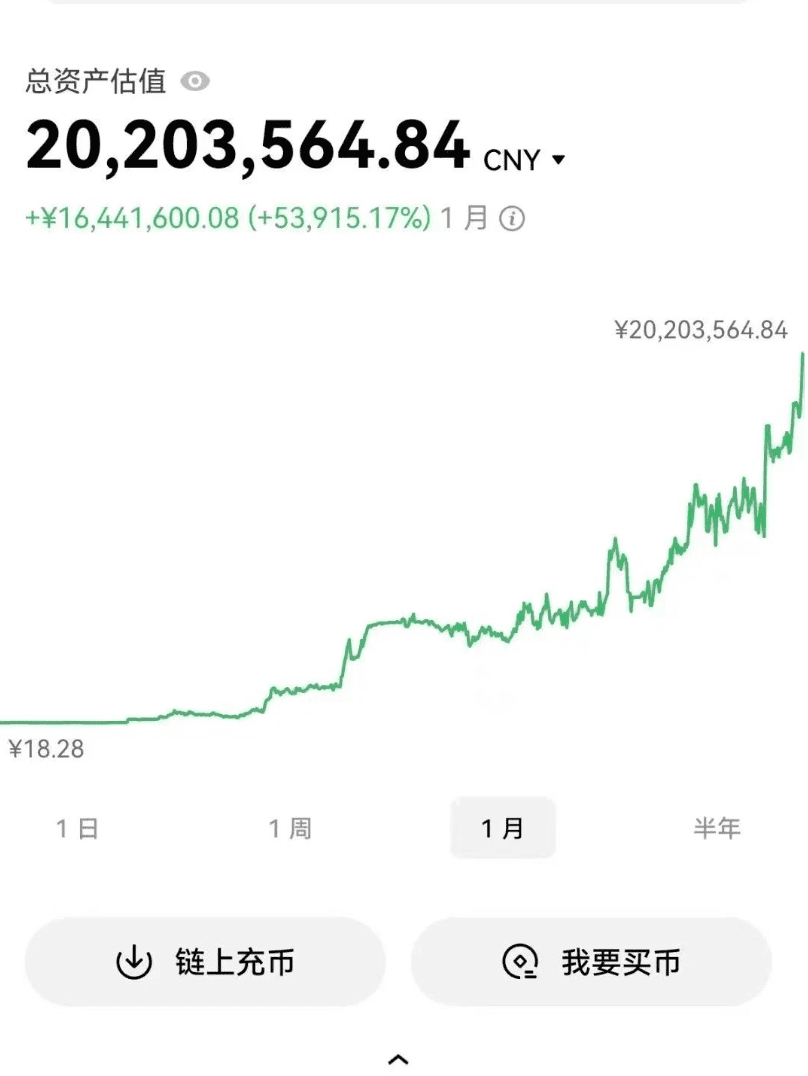
The market is always changing, but the rules do not change. Your only goal is: not to be washed out in this sandstorm. If you feel lost, consider saving this article as a starting point for your trading journey. It’s not about getting rich quickly, but about staying in the game.
Without further ado, here are 8 iron rules; understanding them means making money!
1. When the market crashes, if your coin only drops slightly, it indicates that there are market makers protecting the price and preventing it from falling. Such coins can be held confidently, and there will be rewards in the future.
2. For beginners trading coins, there is a simple and direct method: for short-term, look at the 5-day line; hold as long as the coin price is above the 5-day line, sell once it breaks below; for medium-term, look at the 20-day line; hold as long as it is above the 20-day line, sell if it breaks below. The best method is the one that suits you, and the key is to stick to it.
3. If the main wave of the coin has formed and there is no obvious increase in volume, then buy decisively. If the price rises with volume, continue to hold; if it decreases with low volume but the trend hasn't broken, also hold; if it falls with volume and breaks the trend, then quickly reduce your position. After a short-term buy, if the coin price does not move in three days, sell if you can. If the coin drops after buying, and the loss reaches 5%, cut your losses unconditionally.
4. If a coin has dropped 50% from a high and has been falling for 8 consecutive days, it indicates that it has entered an oversold state, and a rebound may occur at any time; consider following up.
5. When trading coins, choose leading coins because they rise the most during uptrends and hold up the best during downtrends. Don't buy just because the price has dropped significantly, and don't avoid buying just because the price has risen significantly. The key to trading leading coins is buying at high levels and selling at even higher levels.
6. Trade in accordance with the trend; the buying price isn't about being low, but rather being appropriate. Don't call a bottom easily during a decline; abandon coins that are underperforming. The trend is the most important.
7. Don’t get impulsive due to temporary profits; remember that sustained profits are the hardest to achieve. Review your trades seriously to determine whether your gains are due to luck or skill. Establishing a stable trading system that suits you is the key to sustained profitability.
8. Do not trade forcefully without sufficient confidence. Keeping cash is also a strategy; learning to hold cash is important. When trading, the first consideration should be capital preservation, not profit. Trading is a competition of success rate, not frequency.
Dear friends, today I will share three classic uses of the EMA indicator with you. Mastering them will give you more confidence in trading.
Identify major trends
If you want to identify the market's major trends, the 'crossing the zero axis method' is definitely worth studying. This method is simple and practical; with just one line, you can have the same analytical skills as many professional technical analysts. This line is the DIF line of the EMA indicator. Let's first understand the EMA indicator. Taking Bitcoin (BTC) as an example, we set the EMA indicator parameters to 12 and 26, and analyze it on a 1-hour time frame. You will find that every time a golden cross occurs, it is often a good entry opportunity.
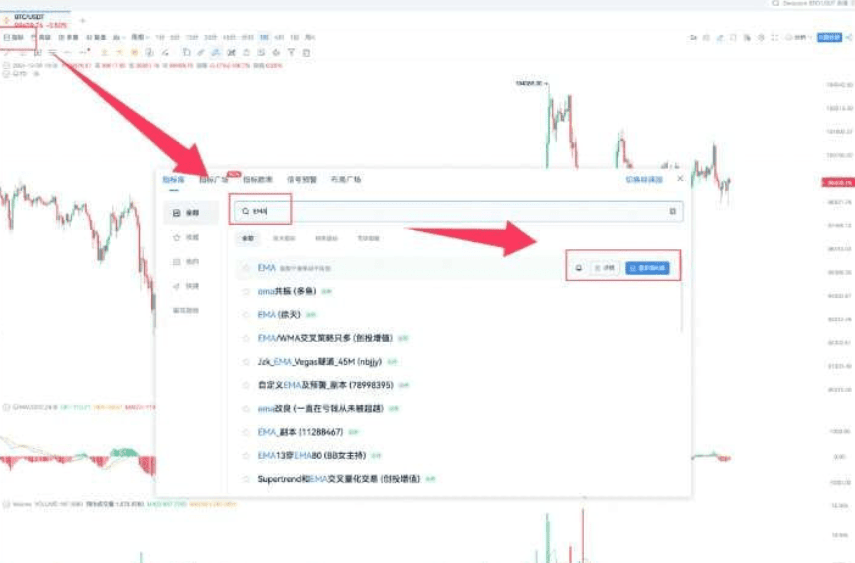
Taking Bitcoin (BTC) as an example, we set the EMA indicator parameters to 12 and 26, and analyze it on a 1-hour time frame.
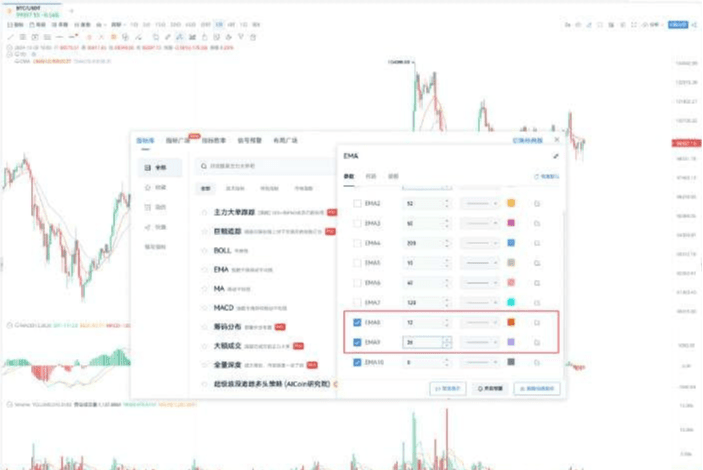
You will find that every time a golden cross occurs, it is often a good entry opportunity.
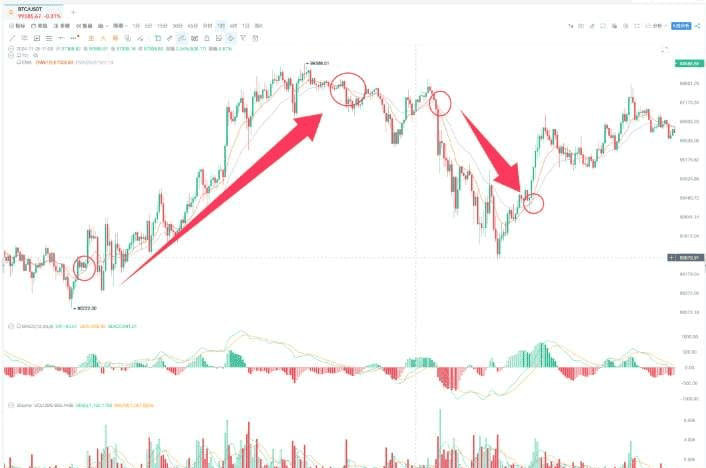
In simple terms, the EMA indicator consists of two parameters, 12 and 26, which form a DIF line that can effectively identify mid-term trends.
Whether it is a golden cross or a death cross, the market usually develops a good trend after that.

In fact, the actual performance of this set of indicator parameters is the same as the DIF line of the MACD indicator.
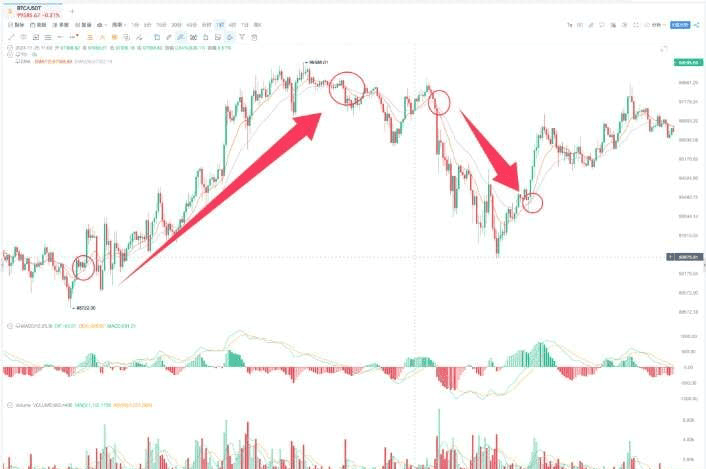
For ease of operation, everyone can also directly use the MACD's DIF line for analysis.
This is the role of the DIF line.
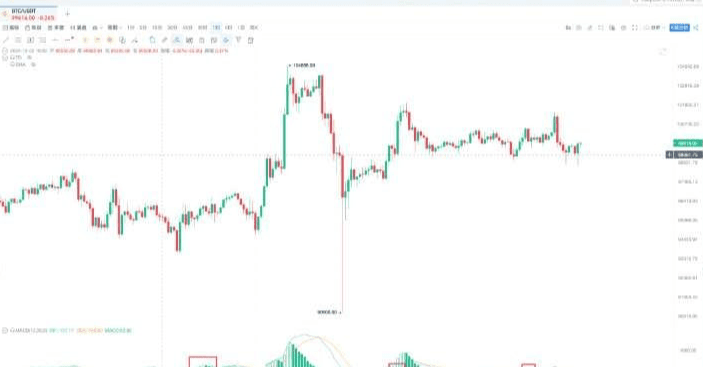
Here, it is important to note that the larger the time frame, the stronger the trend directionality of the DIF line. For example, we can choose a 4-hour time frame to use the DIF line to identify the trend direction.
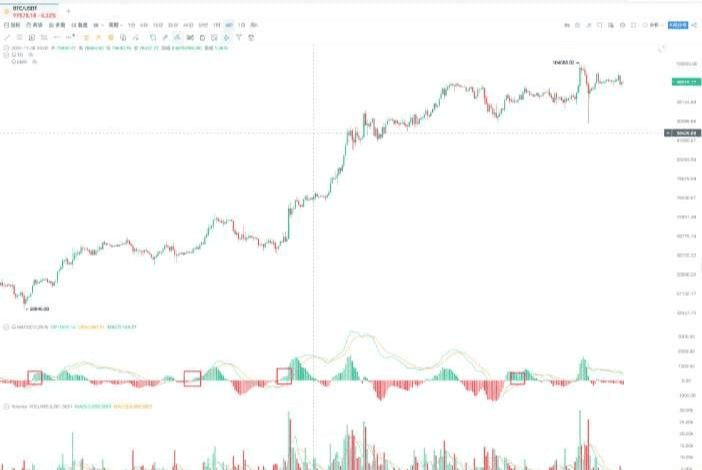
When the DIF line falls below the zero axis, we can take some profits and cautiously go long;
When it breaks above the zero axis, combined with other indicators and large order data, we can be more confident in going long.
Because once the situation of crossing the zero axis occurs, it means that a trend has formed. Before this trend ends, we will have many entry opportunities.
Therefore, it is recommended that everyone treat the DIF line as a trend direction indicator. Its underlying logic is composed of EMA12 and EMA26, and it can be understood as part of the EMA indicator.
Many people think that the EMA indicator has lag, but this is a misunderstanding. The EMA indicator uses a weighted average algorithm, giving more weight to recent prices. Therefore, once there is an unusual movement in recent prices, it will immediately reflect on the EMA indicator, and it can also reflect the price level over a period of time. The EMA indicator achieves a good balance between sensitivity and stability, making it very suitable as a tool for technical analysis. In summary, use a 4-hour time frame to determine the trend; look bullish when the DIF line crosses above, and bearish when it crosses below.
Look for EMA signals
1. Resonance signals
This is a very robust trading method.
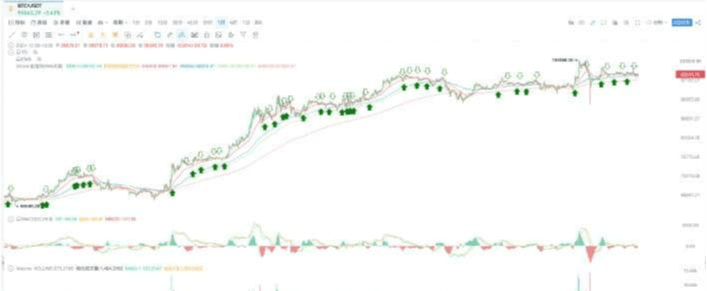
I have a set of EMA resonance algorithms, which are advantageous because they generate many signals, precise entries, and quick exits. The solid green arrows represent the start of a bullish resonance, while the hollow arrows represent the end of a bullish resonance. If the market trend is upward, combined with these signals, we can decisively enter. In a downward trend, corresponding short-selling signals will also appear.
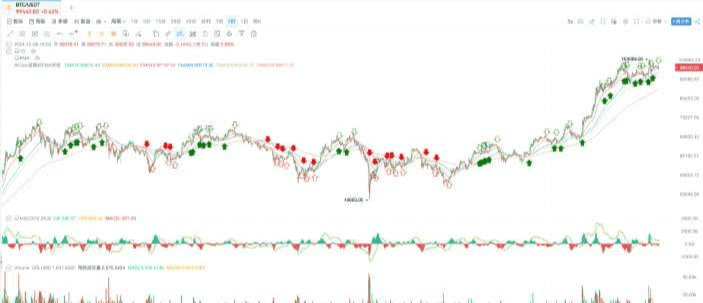
My suggestion is to first confirm the trend using the DIF line, then try using this set of resonance indicators. You can also change the resonance parameters yourself; currently, I am using a set of 6 EMAs for resonance.
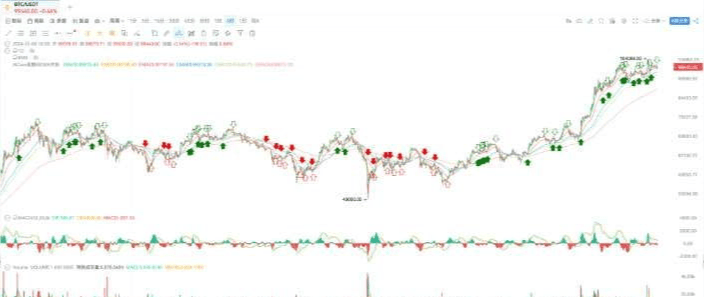
This pure EMA bullish resonance indicator is easy to understand: when all EMAs are in a bullish arrangement, we open long positions; when they are in a bearish arrangement, we open short positions. It can provide excellent entry and exit opportunities. If you can't find a suitable reason to enter and easily feel anxious in the market, then the bullish and bearish signals of the EMA arrangement are very suitable for you.
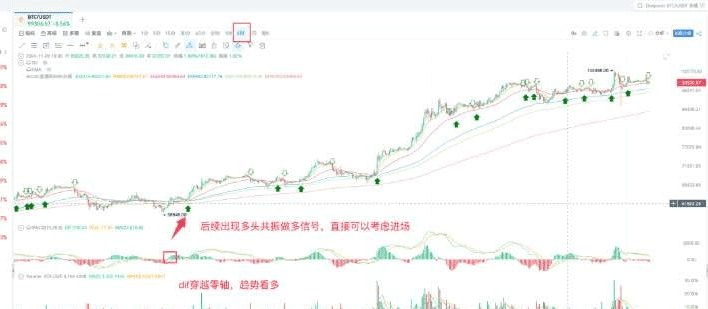
It can help you not miss the best entry points. In simple terms, it uses the DIF line to determine the trend and looks for entry opportunities using resonance signals. The combination of the two greatly increases the probability of making money.
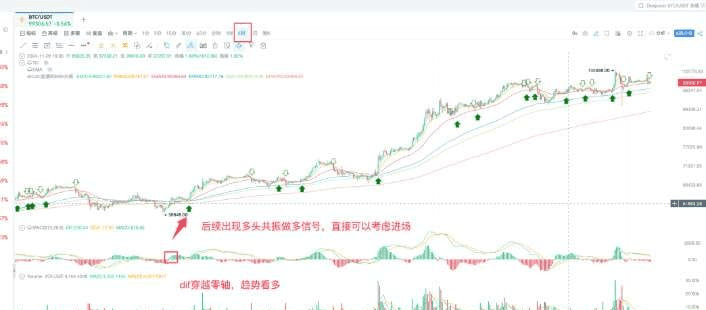
Here, students can subscribe and change to their desired EMA resonance indicators.
I have done the third thing!
This time I recommend this set for everyone to try.
The DIF line determines the trend, and the resonance signals find the entry points, making money together~
Next, let me show you the actual trading and make recommendations.
The first recommendation: AI Grid
Recommendation: After breaking a new high, there will be a small consolidation period, which is very suitable for grid trading. Automated buying low and selling high allows for passive income.
Why does the host recommend it? Because I have always used AICoin's AI grid for trading.

Running the grid since July 31, 2024,
It is important to note that if there is a period when the price breaks above or below the grid, we need to readjust the upper and lower limits.
This is the upper and lower limit range I set after breaking a new high.
Of course, my grid capital is not large, only 700U, but the results are very good, and profits are generally increasing continuously.

The second recommendation: arbitrage
The host has been continuously running positive arbitrage, making money from funding fees.

I have also been conducting positive arbitrage trading, earning profits from funding fees. My input cost is about 30,000 U, and I can receive profits about three times a day, like clockwork.
If your capital is relatively large, arbitrage is a very good choice. Its advantage is stability, and it has a high chance of making money.

In summary, there are many profitable opportunities in the market; arbitrage is very suitable for large capital participation. Earning from the market gives a sense of certainty that is truly wonderful.
I only do real trading; the team still has spots to get in quickly.



